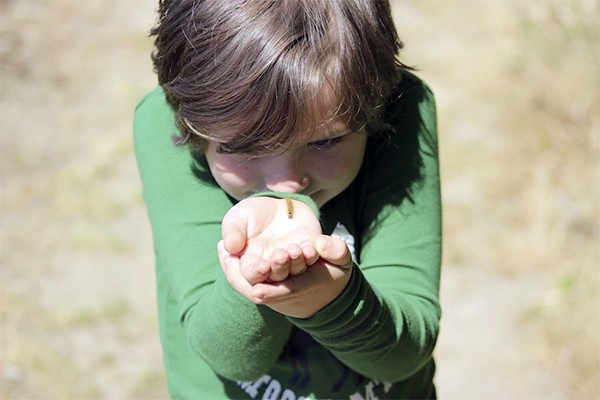For the fifth and, this year, final time for a while, Vashon Nature Center staff, scientists and volunteers will spend the better part of 24 hours this weekend cataloging as many of the island’s wildlife and plant species as possible within a specific island ecosystem during BioBlitz 2016.
“This will be the final BioBlitz for a couple of years,” said Vashon Nature Center (VNC) program and outreach manager Kathryn True. “We need to take some time to analyze and interpret the data we’ve collected so far. We hope to make our findings public as well as have them published in scientific journals.”
The BioBlitz, an annual event on the island since 2012, began in 1996 at the Kenilworth Aquatic Gardens in Washington, D.C., with the name coined by Susan Rudy — a naturalist with the U.S. National Parks Service who was volunteering to help.
The idea is to record all living species within a designated area, and to do that, participants are divided into teams according to species categories, with specialists in those categories leading the way. On the island, categories include (but are not limited to) amphibians, plankton, dragonflies, insects and butterflies, birds — which offers a sub-category of owls — fungi, forestry, plants and animals. True noted that to date, the VNC has recorded about 900 different species over the past four events, not including any terrestrial invertebrates (insects). With them, the number would be closer to 1,500.
Islander Jim Evans, a plant biologist, conservation scientist and eco-restoration practitioner with a masters’s degree in botany, is the VNC’s BioBlitz incumbent vegetation team leader, having participated in every event thus far.
“I wouldn’t miss it,” he said. “As a biologist, I think of it as a celebration — gathering all of this information and being around so many knowledgeable people. It’s wonderful.”
Evans also believes that these events have significant value across all age groups and depths of knowledge.
“This is as much an educational experience as anything else,” he elaborated. “There are families participating and people with varying degrees of expertise on all of the teams, as well as a lot of cross over of expertise information exchanges between them. I always have a great feeling of wellbeing, seeing all of this biologic information being gathered.”
And on occasion, some of that information turns out to be extraordinary.
“Last year, one of our team specialists identified these ultra-tiny freshwater snails in the Christensen Creek watershed,” True said. “These snails cannot migrate or distribute themselves in any way except via fresh water, which means that they could only have gotten here during the last glaciation. It’s truly incredible the ways in which these surveys can help us understand the nature of this place and how it’s evolving.”
Also on the list of unique Vashon BioBlitz finds is a rare fungus, the first of its kind discovered in the state, which now resides in the University of Washington’s Burke Museum herbarium.
The blitz is scheduled to begin Friday afternoon and will run until Saturday afternoon, with teams heading into the Judd Creek watershed, one of the larger areas the VNC has studied over the years. Only some teams will be active through the night, including owls, and this year, there will be activities, interpretive displays and learning stations set up at “base camp” (Matsuda Farm) for those who don’t want to go out with a team or for families who only want to come for the afternoon or morning.
True believes the information gathered from these surveys can help other organizations such as the Land Trust or the state Department of Natural Resources make decisions about conservation and preservation, and the nature center will continue running other citizen science programs and projects while it works on the five years of BioBlitz data.
Evans, for his part, is just looking forward to getting out into his element.
“Biologists love life,” he said. “It’s just great to be out there around so much of it.”



